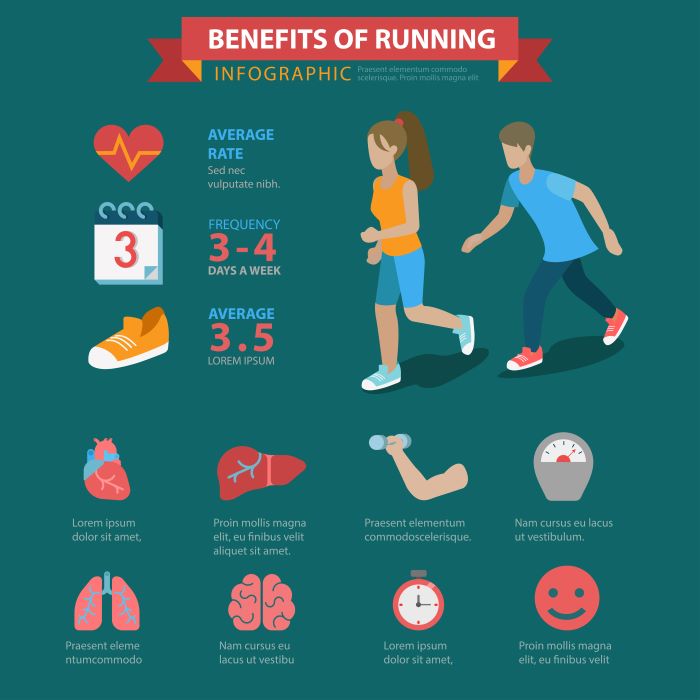When embarking on your journey towards completing a half marathon, understanding the requisite distances you need to cover each week is crucial for effective training. The general consensus among experts is that beginners should aim for around 10 to 15 miles per week, gradually increasing the mileage as endurance builds. This approach not only prepares your body but also helps in preventing injuries.
For those who are more experienced, the mileage can range from 20 to 30 miles per week. This higher volume caters to the need for long runs, tempo runs, and interval training, all essential components of a comprehensive training plan. Here are some key aspects to consider:
- Long Runs: Typically performed once a week, these should progressively increase in distance to build stamina.
- Recovery Runs: Shorter, slower-paced runs that help your body recover while still contributing to your weekly mileage.
- Speed Work: Incorporate intervals or tempo runs to improve your pace and overall performance.
It’s essential to listen to your body and adjust your training accordingly. Each runner’s ability and experience level will influence their ideal mileage. Embrace the journey, and as you train, remember that every step counts towards your goal.
Interested in learning more about how to tailor your training? Visit our website to learn more and get started today! Click here.
Recommended Weekly Mileage for Half Marathon

Determining the recommended weekly mileage for half marathon training depends significantly on your current fitness level, experience, and race goals. For beginners, a safe and effective target is to gradually work up to around 15 to 20 miles per week. This mileage allows for sufficient preparation without overwhelming your body, making it crucial to focus on building a solid base.
As runners gain experience and confidence, they can consider increasing their weekly mileage. Intermediate runners might find that a range of 20 to 25 miles per week is beneficial, enabling them to incorporate more challenging workouts like tempo runs and intervals. This increment helps improve speed and endurance, essential for tackling the half marathon distance.
For advanced runners aiming for personal bests, the recommended mileage can soar to between 25 and 35 miles per week. At this level, incorporating diverse workouts becomes essential:
- Long Runs: These should ideally make up a significant portion of your weekly mileage, often constituting around 20-30% of your total.
- Speed Work: Include sessions of high-intensity training to boost your speed and efficiency.
- Cross-Training: Complement your running with other forms of exercise to prevent burnout and injuries.
Remember that these figures are guidelines; individual needs may vary. Consistent evaluation of your progress and adapting your training plan accordingly is key to a successful half marathon experience.
Factors Influencing Your Weekly Mileage Goals
Setting appropriate weekly mileage goals for half marathon training is influenced by several factors that can affect your training regimen and overall performance. Understanding these elements can help you tailor your approach to fit your unique needs.
1. Experience Level: Runners with more experience typically have a better understanding of their bodies and can handle higher mileage. Beginners should start conservatively to avoid injuries, while seasoned runners can push their limits.
2. Fitness Level: Your current fitness level plays a critical role in determining how much mileage you can safely handle. Those with a strong aerobic base can manage more mileage, while those new to running may need to gradually build up their endurance.
3. Injury History: Previous injuries can significantly affect your training. If you have a history of running-related injuries, it’s wise to set more conservative mileage goals and focus on recovery and prevention techniques.
4. Time Availability: Balancing work, family, and training commitments is essential. Assess how much time you can realistically dedicate to running each week, as this will help you establish achievable mileage targets.
5. Terrain and Weather: The type of terrain you run on (road, trail, hills) and weather conditions can impact your training intensity and overall mileage. Adjust your goals based on these variables to ensure a safe and effective training experience.
By considering these factors, you can set realistic and personalized mileage goals that align with your half marathon aspirations.
Building a Half Marathon Training Plan

Creating a structured half marathon training plan is essential for achieving your running goals and ensuring you’re well-prepared for race day. A well-designed plan will incorporate various elements to enhance your endurance, speed, and overall performance.
1. Establish a Base Mileage: Before diving into specific training, it’s crucial to establish a base mileage. Aim to run consistently for several weeks, gradually increasing your weekly mileage. This will help build your endurance and prepare your body for the demands of half marathon training.
2. Incorporate Long Runs: Long runs are a staple of any half marathon training plan. Schedule a weekly long run that gradually increases in distance, peaking at about 10-12 miles. This will help you adapt to the distance and improve your stamina.
3. Include Speed Work: To boost your overall race pace, incorporate speed work into your training. This can include intervals, tempo runs, or hill repeats. Such workouts improve your cardiovascular fitness and help with pacing during the race.
4. Prioritize Recovery: Recovery days are just as important as training days. Ensure you include rest days and easy runs to allow your body to recover and adapt. This will help prevent injuries and keep your motivation high.
5. Taper Before Race Day: As you approach race day, implement a tapering period where you reduce your mileage. This will help your body recover fully while maintaining fitness, ensuring you feel fresh and ready to perform your best.
By following these guidelines, you can build a comprehensive training plan that aligns with your fitness level and goals, paving the way for a successful half marathon experience.
Tips for Increasing Weekly Running Mileage Safely

Increasing your weekly running mileage is a pivotal part of preparing for a half marathon, but it’s essential to do so safely to avoid injuries. Here are some effective tips to help you ramp up your mileage while keeping your body healthy:
1. Follow the 10% Rule: One of the most common guidelines for increasing mileage is the 10% rule. This means that you should not increase your total weekly mileage by more than 10% each week. This gradual approach allows your body to adapt without overwhelming it.
2. Listen to Your Body: Pay attention to how your body responds as you increase your mileage. If you experience pain or discomfort, it may be a sign that you need to scale back. Prioritizing your body’s signals can prevent long-term injuries.
3. Mix Up Your Runs: Incorporate a variety of runs into your training, including easy runs, long runs, and speed workouts. This not only keeps training interesting but also helps develop different muscle groups and improves overall performance.
4. Cross-Train: Engaging in cross-training activities, such as cycling, swimming, or strength training, can improve your fitness without the impact stresses associated with running. This allows you to build endurance and strength while giving your legs a break.
5. Ensure Proper Footwear: Wearing the right running shoes is crucial when increasing mileage. Shoes that provide adequate support and cushioning can help reduce the risk of injury. Make sure to replace them regularly to maintain their effectiveness.
By implementing these strategies, you can increase your weekly running mileage safely and effectively, setting a solid foundation for your half marathon training journey.
Tracking Progress and Adjusting Your Training

Tracking your progress during half marathon training is essential for ensuring that you are on the right path to achieving your fitness goals. By monitoring your mileage, pace, and overall performance, you can make informed adjustments to your training plan. Here are some effective methods to track your progress:
1. Use a Running App: There are numerous running apps available that can help you log your runs, track your pace, and monitor your weekly mileage. Apps like Strava, Runkeeper, and MapMyRun not only provide data but also allow you to connect with a community of runners for motivation.
2. Keep a Training Log: Maintaining a physical or digital training log can be incredibly beneficial. Documenting your runs, how you felt during each session, and any challenges you faced will help you identify patterns and make necessary adjustments to your training.
3. Set Specific Goals: Establish clear and measurable goals for each week or month of your training. Whether it’s increasing your long run distance or improving your pace, having specific targets will give you something to work towards and help you stay focused.
4. Regular Assessments: Schedule periodic assessments to evaluate your progress. This could be a time trial or a race simulation where you can gauge your fitness level. These assessments provide valuable insights into areas where you may need to adjust your training.
5. Adjust Based on Feedback: Be flexible with your training plan. If you find that certain workouts are too challenging or not yielding the results you want, don’t hesitate to tweak your schedule. Adapting your training based on your progress is key to a successful half marathon.
Tracking your progress and making necessary adjustments ensures that you are continuously improving and moving towards your half marathon goal. Visit our website to learn more and get started today! Click here.


